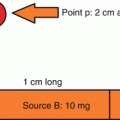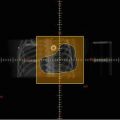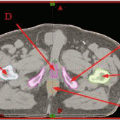(1)
University of Miami Sylvester Cancer Center, Miami, Florida, USA
8.1 QA Guidance and Protocols (Questions)
Quiz-1 (Level 2)
1.
Which of the following associations set minimum standards of QA required for hospitals seeking accreditations?
A.
American College of Radiology (ACR)
B.
American Association of Medical Physics (AAPM)
C.
Nuclear Regulatory Commission (NRC)
D.
Joint Commission for Accreditation of Health Care Organization (JCAHO)
2.
The Intersociety Council for Radiation Oncology (ISCRO) specifies in the blue book that:
A.
I, II, and III only
B.
I and III only
C.
II and IV only
D.
IV only
E.
All are correct
I.
At least one dosimetrist must cover a center for up to 300 patients treated annually.
II.
At least one physicist must cover a center for up to 400 patients treated annually.
III.
At least one radiation oncologist must cover a center for up to 200–250 patients treated annually.
IV.
Dosimetrists can perform physics work as long as a physicist established the procedures, directs the activities, and reviews the results.
3.
Which of the following statements is NOT true?
A.
Dosimetrists can perform calibration of radiation generators or sources.
B.
Calibration of radiation generators or sources is the exclusive responsibility of the medical physicist.
C.
The radiation oncologist undoubtedly has the overall responsibility for the conduct of the entire treatment process.
D.
A dual-energy linear accelerator can provide all the beams necessary for modern radiotherapy.
4.
What is the primary physicist’s role when radiotherapy equipment is purchased?
A.
Write technical specifications.
B.
Share responsibilities between the radiation oncologist and administrator.
C.
Decide the budget.
D.
Select the location to be installed.
5.
A radiotherapy equipment acceptance test is done to:
A.
I, II, and III only
B.
I and III only
C.
II and IV only
D.
IV only
E.
All are correct
I.
Demonstrate that the product meets the specifications of the manufacturer
II.
Prove that the product arrives on specified date and time at the hospital or institution
III.
Satisfies the legal requirements of equipment safety
IV.
Train the physicist on the new equipment or product
6.
A qualified medical physicist must:
A.
I, II, and III only
B.
I and III only
C.
II and IV only
D.
IV only
E.
All are correct
I.
Have a MS or PhD degree in physics, medical physics, or a closely related field.
II.
Have a minimum of a high school diploma.
III.
Have a certification in radiation oncology physics by the American Board of Radiology, the American board of Medical Physics, or another appropriate certifying body.
IV.
Have a certification by the American Association of Medical Dosimetrists
7.
Which of the following are responsibilities of the physicist?
A.
I, II, and III only
B.
I and III only
C.
II and IV only
D.
IV only
E.
All are correct
I.
Acceptance testing of new equipment
II.
Commissioning of new equipment
III.
Calibration of equipment
IV.
Installation of new equipment
8.
Which of the following parameters are considered during the radiation survey performed by the physicist after installation of new equipment?
A.
I, II, and III only
B.
I and III only
C.
II and IV only
D.
IV only
E.
All are correct
I.
Dose rate output
II.
Machine on time
III.
Use factor
IV.
Occupancy factor
9.
Which of the following is NOT included on a formal radiation protection survey after completion of new equipment installation?
A.
Measurement of head leakage and area survey
B.
Tests of interlocks and warning lights
C.
Emergency switches
D.
Radiation dose received by installation workers
10.
Which of the following is the comprehensive guidance for radiation oncology QA from the AAPM?
A.
TG-40
B.
TG-43
C.
TG-51
D.
TG-21
11.
Since new technologies such as IMRT were developed in recent decades, AAPM generated another QA guideline for linear accelerators as an important amendment to meet the new needs. Which of the following is that report of AAPM?
A.
TG-135
B.
TG-142
C.
TG-144
D.
TG-101
12.
What is the protocol of AAPM for absolute dosimetry QA for high-energy photon and electron beams after year 1999?
A.
TG-40
B.
TG-43
C.
TG-51
D.
TG-21
13.
What is the difference between acceptance testing and commissioning of equipment?
A.
They are essentially the same.
B.
They are totally irrelevant.
C.
Acceptance test runs a small portion of dataset of commissioning.
D.
Commissioning runs a small portion of dataset of acceptance test.
8.2 Requirements and Tolerance for QA Procedures (Questions)
Quiz-1 (Level 2)
1.
The approximately overall uncertainty to a point when using wedges in a treatment field is:
A.
1.6 %
B.
2.0 %
C.
3.0 %
D.
5.5 %
2.
Which of the following is NOT a method used to check jaw symmetry?
A.
Graph paper
B.
Film
C.
Machinist’s dial indicator
D.
Front pointer
3.
Which of the following gantry angles should be used when checking light versus x-ray field alignment for acceptance testing of a linac?
A.
I, II, and III only
B.
I and III only
C.
II and IV only
D.
IV only
E.
All are correct
I.
0° gantry angle
II.
90° gantry angle
III.
180° gantry angle
IV.
270° gantry angle
4.
According to the AAPM guidelines, the alignment between the light field and the x-ray field should be:
A.
2 mm diameter circle
B.
±2 mm or 1 % on a side
C.
±1 mm or 1 % on a side
D.
±5 mm or 1 % on a side
5.
Which of the following QA tests are done using films that show star patterns with a dark central region?
A.
II, III, and IV only
B.
I and III only
C.
II and IV only
D.
IV only
E.
All are correct
I.
Field symmetry
II.
Collimator rotation
III.
Table rotation
IV.
Gantry rotation
6.
The split-field test is used to detect:
A.
I, II, and III only
B.
I and III only
C.
II and IV only
D.
IV only
E.
All are correct
I.
Focal spot displacement
II.
Asymmetry of collimator jaws
III.
Displacement in the collimator or gantry rotation axis
IV.
Light field with x-ray field alignment
7.
The most practical method of specifying clinical beam energy is:
A.
Depth-dose distribution
B.
Sandwiched film between buildup sheets
C.
Machinist’s dial indicator
D.
Clarkson’s method
8.
Which of the following should be considered in order to determine clinical beam energy?
A.
I, II, and III only
B.
I and III only
C.
II and IV only
D.
IV only
E.
All are correct
I.
Ion chamber diameter should be larger than 3 mm diameter.
II.
Ion chamber diameter should be smaller than 3 mm diameter.
III.
Absolute values of the percent depth dose should be used for comparing depth-dose distribution with published data.
IV.
Depth-dose ratios for depths beyond the depth of Dmax should be used for comparing depth-dose distribution with published data.
9.
The depth-dose distribution for photon clinical beam energy is specified at:
A.
10 × 10 cm field size, 100 cm SAD, 10 cm depth
B.
40 × 40 cm field size, 100 cm SSD, 10 cm depth
C.
10 × 10 cm field size, 100 cm SSD, 10 cm depth
D.
10 × 10 cm field size, 100 cm SAD, Dmax
10.
Which is the difference in the depth-dose ratio or ionization ration acceptance from the published values data when performing photon beam energy measurement?
A.
±1 %
B.
±2 %
C.
±3 %
D.
±4 %
11.
For acceptance testing, photon beam flatness should be checked for which of the following situations?
A.
I, II, and III only
B.
I and III only
C.
II and IV only
D.
IV only
E.
All are correct
I.
For a 10 × 10 field size at least at 10 cm and Dmax depth
II.
For the maximum field size at least at 10 cm and Dmax depth
III.
For a 10 × 10 field size at a depth of 10 cm
IV.
Using diagonal scans
12.
Which of the following methods are used for electron beam energy measurements?
A.
Depth-dose or depth ionization curve for a broad beam
B.
Depth-dose distribution measured at depth 10 cm using a 10 × 10 cm field size at 100 SSD
C.
Using a radiographic film to measure the distribution of activity
D.
Depth-dose curve in a water phantom for a broad beam at Dmax
13.
Match the following QA test with the correct tolerance:
A.
Optical distance indicator
B.
Gantry and collimator angles
C.
Sag of couch
D.
Jaw symmetry
E.
Light beam with x-ray beam
F.
Collimator rotation
G.
Beam flatness and symmetry
I.
±1 mm from baseline
II.
1°
III.
1 mm diameter circle
IV.
2 mm
V.
±1 % change from baseline
VI.
2 mm from baseline
VII.
2 mm or 1 % on a side
14.
Which of the following statements is NOT true?
A.
Short-lived interstitial sources in the form of seeds, wires, or seed-loaded ribbons can be tested by visual inspection behind a leaded glass window.
B.
A standard seed of a different isotope should be used to calibrate the well ionization chamber.
C.
For a batch of a large number of sources, a randomly selected sample of three or four ribbons of a given strength should be check for calibration.
D.
125I seeds are difficult to calibrate because of the low energy of the emitted photons.
15.
Acceptance procedures for a HDR remote afterloading unit should include:
A.
I, II, and III only
B.
I and III only
C.
II and IV only
D.
IV only
E.
All are correct
I.
Operational testing of the afterloader unit
II.
Radiation safety check of the facility
III.
Checking of source calibration and transport
IV.
Checking of treatment planning software
16.
A linear accelerator is ready to be used for patient treatments:
A.
After acceptance testing is done, reviewed, and approved
B.
After commissioning is done, reviewed, and approved
C.
After QA is done, reviewed, and approved
D.
After the vendor installation is completed
17.
Linear accelerator commissioning is completed:
A.
After calibration of all modalities and energies according to current protocols
B.
After a transverse, longitudinal, and diagonal dose profiles for all modalities and energies at Dmax for electrons and selected depths for photons are acquired
C.
After the beam data has been input into the treatment planning computer and the computer generated dose distributions have been checked
D.
After all output factors as a function of field size for all photon energies and all electrons as a function of cones and standard insets are complete
18.
Acceptance testing and commissioning of the treatment planning computer system include:
A.
I, II, and III only
B.
I and III only
C.
II and IV only
D.
IV only
E.
All are correct
I.
Checking the accuracy and linearity of input digitizers, output plotters, and printers
II.
Checking the accuracy of dose distributions for a selected set of treatment conditions against measured distributions or manual calculations
III.
Checking the algorithm accuracy, precision, limitations, and special features
IV.
Checking the treatment planning computer system’s company records
19.
Which of the following QA tests must be done daily on a linear accelerator?
A.
Emergency off switches check
B.
Door interlock check
C.
Light/radiation field coincidence check
D.
Tabletop sag check
20.
Which of the following QA test must be done daily on a simulator?
A.
Fluoroscopic image quality
B.
Field size indicator
C.
Distance indicator (ODI)
D.
Exposure rate
21.
The NRC requires full calibration of a teletherapy unit:
A.
I, II, and III only
B.
I and III only
C.
II and IV only
D.
IV only
E.
All are correct
I.
Before the first medical use of the unit and at intervals not exceeding 1 year
II.
Whenever spot-check measurements differ by more than 5 % from the output at the last full calibration
III.
Following replacement of the source or relocation of the unit
IV.
Following repairs that could affect the source exposure assembly
22.
Some calibration checks of a teletherapy units required by NRC include:
A.
I, II, and III only
B.
I and III only
C.
II and IV only
D.
IV only
E.
All are correct
I.
Output being within ±3 %
II.
On-off error
III.
Uniformity of radiation field and its dependence on the orientation of the radiation field
IV.
Timer constancy and linearity over the range of use
23.
As per ICRP recommendations, simulator annual QA tube leakage must not exceed:
A.
1 R/h at 1 m
B.
0.1 R/min at 1 m
C.
0.1 R/h at 1 m
D.
1 R/h at 10 m
24.
When performing simulator annual QA tube leakage tests:
A.
I, II, and III only
B.
I and III only
C.
II and IV only
D.
IV only
E.
All are correct
I.
Measurement of tube leakages must be done using highest kVp setting.
II.
Measurement of tube leakages should be done using any combination of kVp and mA.
III.
Measurement of tube leakages must be done using the highest mA.
IV.
Measurement of tube leakage should be done with the machine in the off position.
25.
Simulator kVp accuracy must be:
A.
Within 10 kVp from selected at control panel
B.
Within 5 kVp from selected at control panel
C.
Within 3 kVp from selected at control panel
D.
Within 15 kVp from selected at control panel
26.
Simulator mA linearity is done:
A.
I, II, and III only
B.
I and III only
C.
II and IV only
D.
IV only
E.
All are correct
I.
To measure the mA setting versus the exposure rate proportionality
II.
To measure the exposure at different mA settings
III.
To measure exposure as a function of mA setting
IV.
To measure exposure as a function of tube current and time setting
27.
Ionization chamber and electrometer systems must be sent to an ADCL for calibration at intervals not exceeding:
A.
Every six months
B.
One year
C.
Two years
D.
Five years
28.
Instruments used to measure relative dose or dose distribution (diodes, TLD, films) should be calibrated by an ADCL every:
A.
Six months
B.
One year
C.
Two years
D.
No required calibration
29.
Calibration of survey meters must be done at intervals not exceeding:
A.
Every six months
B.
One year
C.
Two years
D.
Five years
30.
Closed-circuit television and audio monitoring systems:
A.
I, II, and III only
B.
I and III only
C.
II and IV only
D.
IV only
E.
All are correct
I.
Are required in treatment rooms
II.
Should be checked daily for proper operation
III.
Should be turned on for all treatments
IV.
Are not necessary if any tracking system (calypso, respiratory gating, etc.) is used
31.
Which of the following statements is NOT correct?
A.
Port films must be approved by the physician before the second treatment fraction.
B.
MLC inter-leaf leakage should be <3 %.
C.
If only one 0.5 cm leaf is retracted when it is supposed to be extended, the treatment can be done because the radiation through 0.5 cm is minimal.
D.
The MLC pattern must be checked by the therapist for each fraction.
32.
Get Clinical Tree app for offline access

Percentage depth-dose QA should be done:
A.




I, II, and III only
Stay updated, free articles. Join our Telegram channel

Full access? Get Clinical Tree






